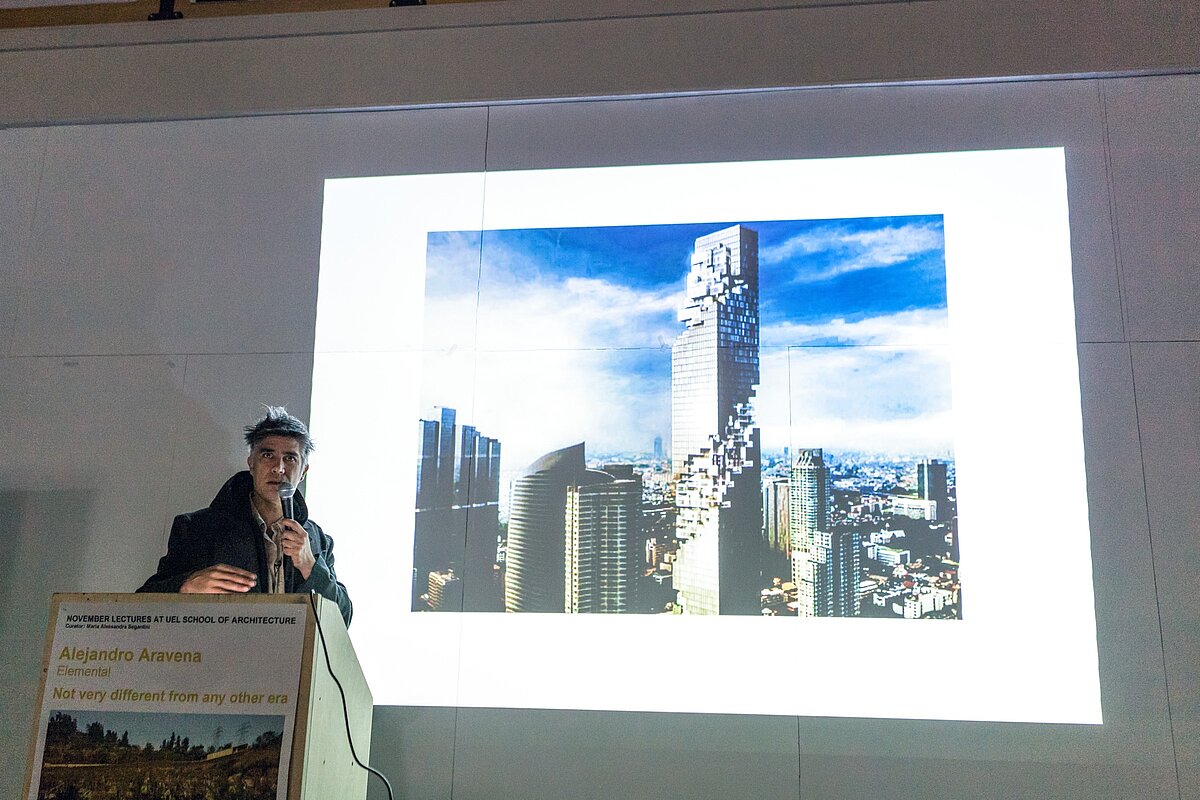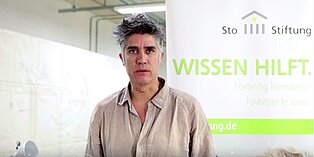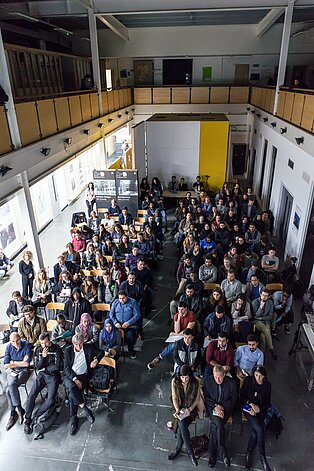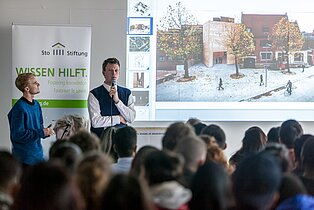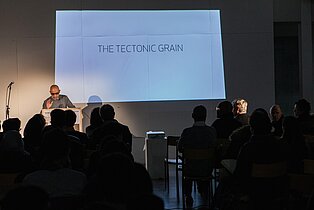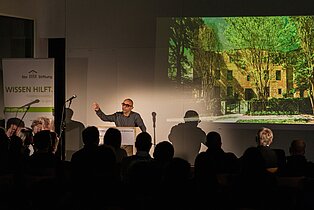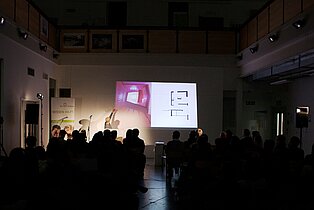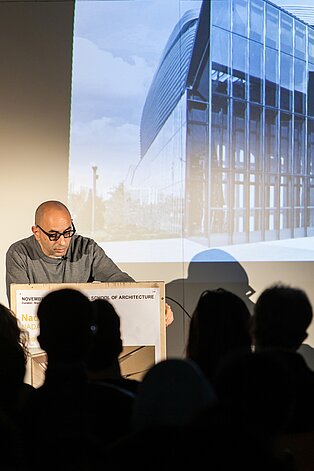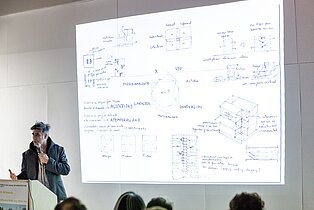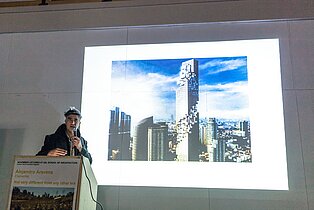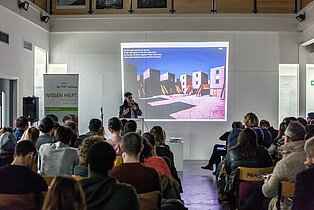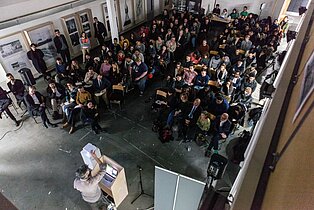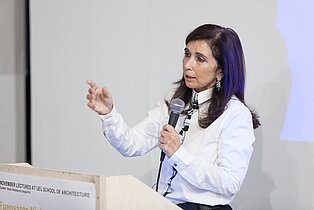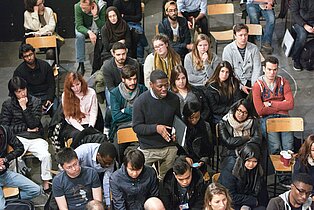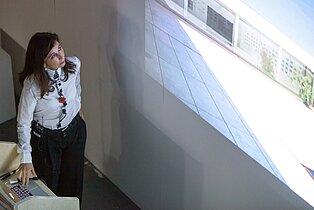Not very different from any other era | Alejandro Aravena
Architect Alejandro Aravena, Partner and Executive Director of Elemental, in Santiago, Chile, chose to move away from the conventional lecture format by engaging the audience in a dialogue.
Form and process
Aravena began the discussion by how architects arrive to ‘form’. He explained that what fundamentally informs the form of a project is nothing but the use, the program and the character.
Through one of Elemental’s projects, the Innovation Centre in Santiago, Chile, Aravena explained the philosophy of creating spaces that are pertinent to the users, the context and of course the nature of the program. Culturally rich and environmentally conscious, the Innovation Centre is a building that is highly sustainable. Aravena stated that ‘Sustainability is nothing but the rigorous use of common sense’. He didn’t hesitate to challenge the narrative of ‘contemporariness’ in architecture, and the mainstream perception of glass buildings as the ultimate form of contemporary design. For Aravena the contemporariness of architecture is measured through relevance, not aesthetic flamboyance. The success of the Innovation Centre does not rely on an artistic manifestation, but on its responsiveness to contextual challenges and the need to meet the users’ objectives.
The building’s rigorous geometry, a powerful set of concrete volumes, essentially forms a timeless monolith. A rich building – both conceptually and physically, the scheme features an opaque façade that conceals a porous day-lit atrium at its core. By facilitating vertical movement, it gives the users the opportunity to know what is going on inside the building. This vertical journey promotes human interaction and collective experiences, and the exchange of knowledge that enables innovation.
Aravena highlighted the absence of any private artistic agenda in the scheme. The Innovation Centre is the outcome of simply paying attention to specific circumstances and translating them into form. Eventually, when a building is shaped by concrete facts, it becomes fundamentally timeless.
In search of composition: Return to the archaic
Aravena also discussed the need to return to the archaic in search of originality. ‘Scarcity is a huge filter against architectural arbitrariness’, argued Aravena, ‘as scarcity of recourses can define the meaning, limit possibilities and lead to quick and effective solutions.’ Elemental’s work deliberately denounces the ostentatious and moves towards the primitive.
Pragmatic architecture: Quinta Monroy - Social Housing scheme, by Elemental
The discussion inevitably shifted to one of the first of Elemental’s infamous social housing schemes.
Elemental was asked to build a social housing scheme for 100 families in Iquique, in northern Chile. The scheme had to be within the standard government subsidy of $7,500 per house, a sum that had to cover the cost of the land, the infrastructure and construction costs. As the site was located within the city-centre, it was therefore three times more expensive than the suburban areas where social schemes are usually built. With a large amount of the budget spent on purchasing the site, Aravena’s solution to the constraints was the development of a building typology that was instinctive, rigorous and profoundly human. The design response to the challenge was to create half a good home by providing the essential parts of a house; the overall structure, the kitchen and the bathroom as well as further room for expansion. This new typology, which emerged through the scarcity of means, allowed underprivileged people to personalise their spaces and invest in their new homes. Aravena remained adamant that architects cannot afford to keep on being irrelevant towards social demands. The profession is required to use the language of design to confront the challenges, and join the social and economic discussion in order to produce architecture that is pertinent. For Aravena, understanding the realities of social, climatic and economic matters, and how they can reflect into design, can lead to the creation of innovative patterns of inhabitation; an architecture that goes beyond mediocrity.
The power of synthesis
Concluding, Aravena discussed the importance of synthesis. He argued that ‘in architecture, synthesis, is nothing more than a series of preferences.’
The work of Elemental is a breath of fresh air in today’s architectural discourse. It’s rather uncommon to come across architecture that deals with constraints; architecture that is not self-indulgent. As Aravena stated, ‘design in the end is preferring’; it is these preferences that encapsulate the synthesis of architecture. For Aravena, architecture owes itself to be rigorous and subversive; to be involved in human nature. Towards the end of the evening we all agreed; architecture owes itself to be relevant.
Alejandro Aravena at the November Talks in London
November Talks 2015 at the University of East London: Watch the interview with Alejandro Aravena.


